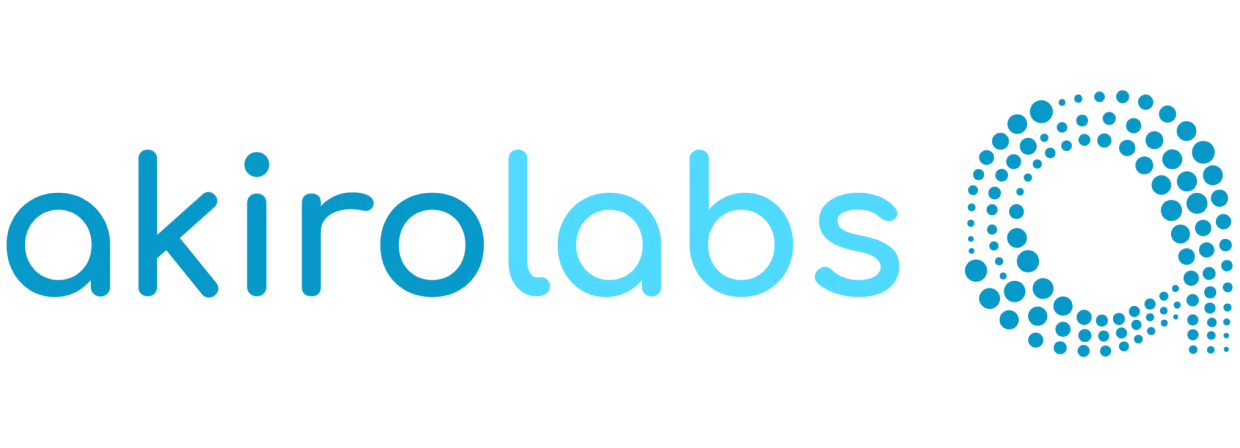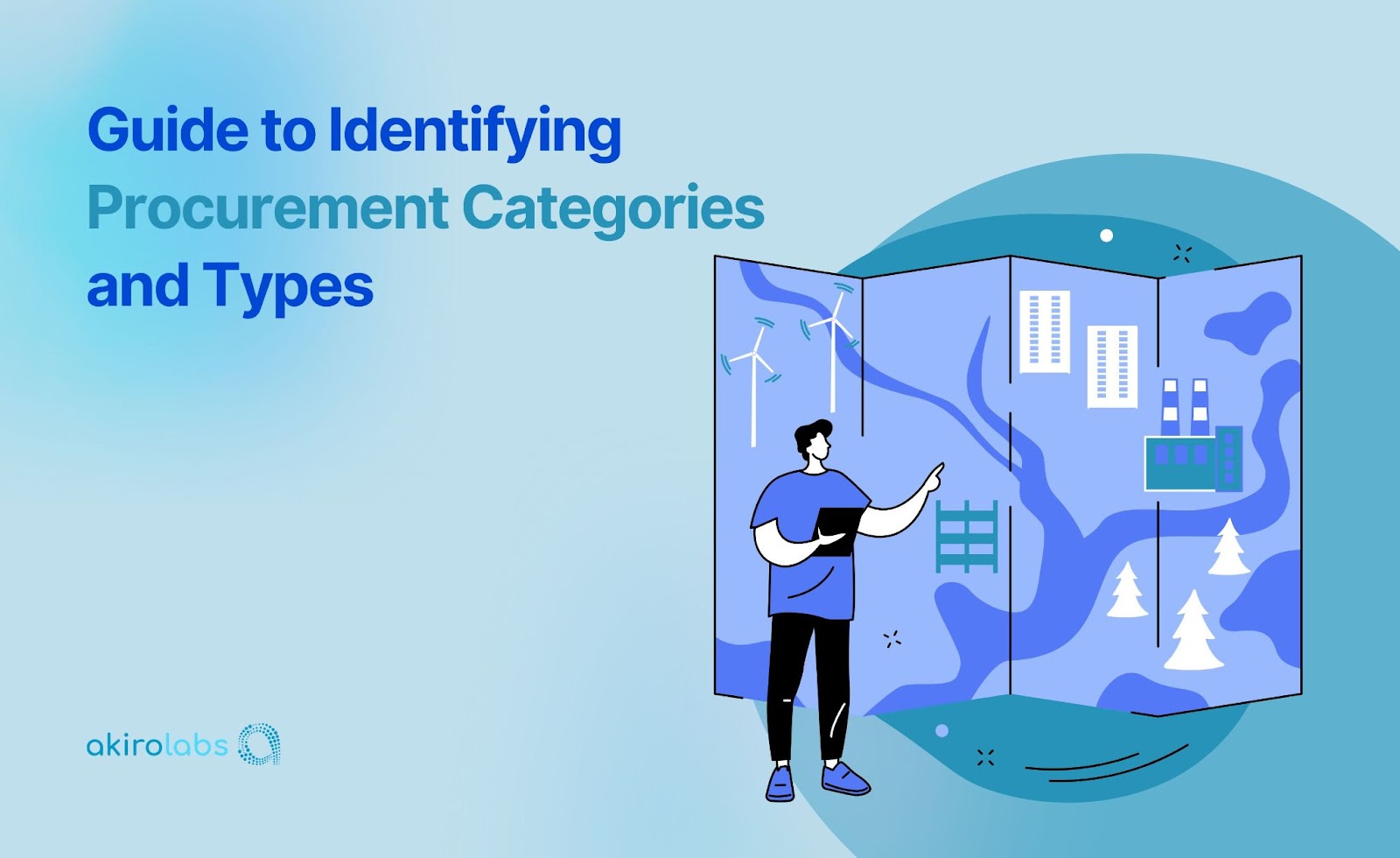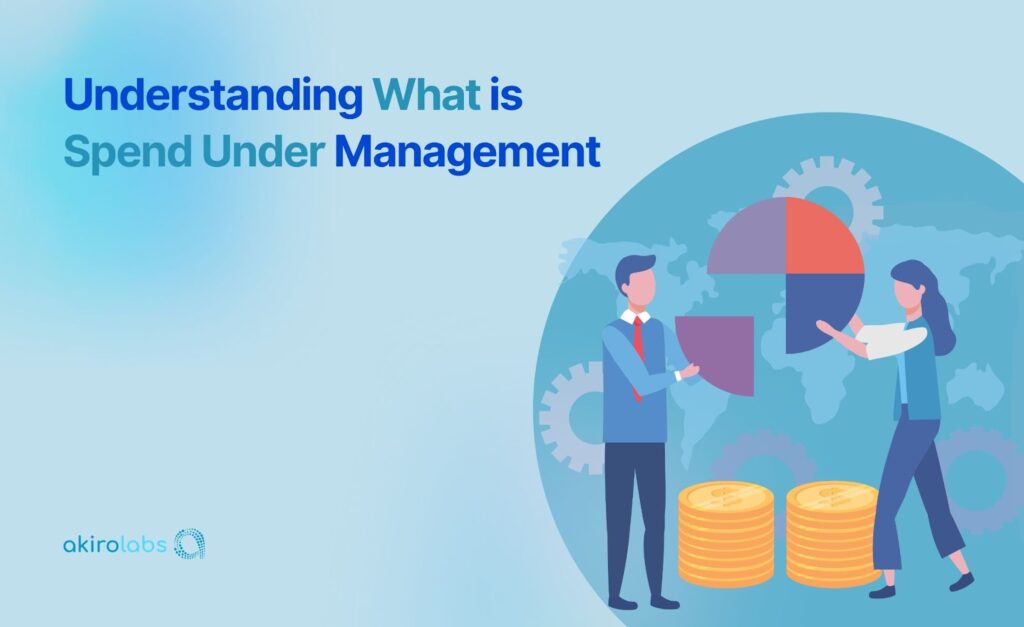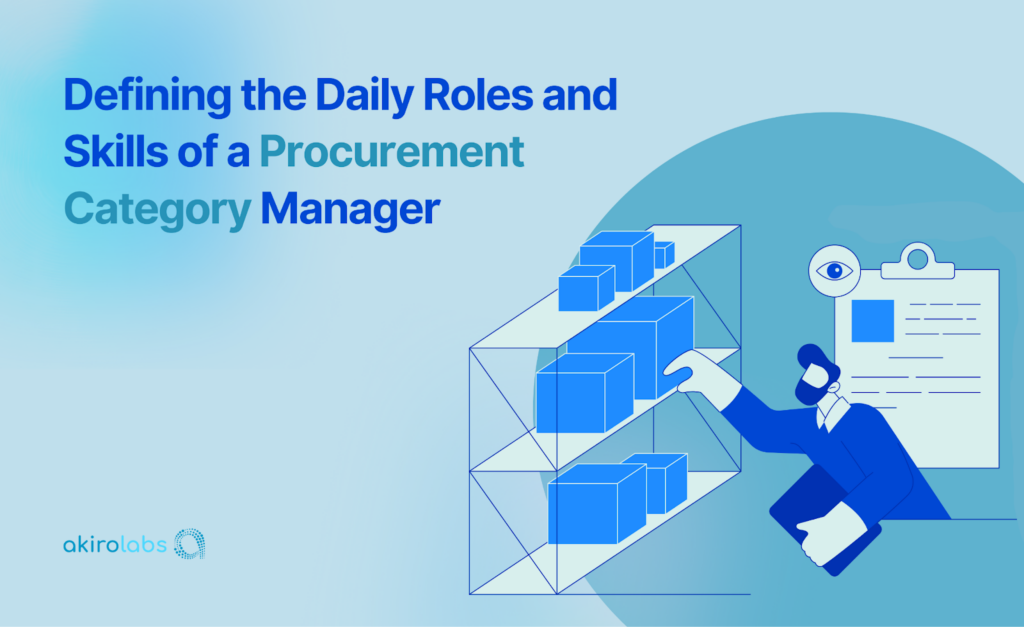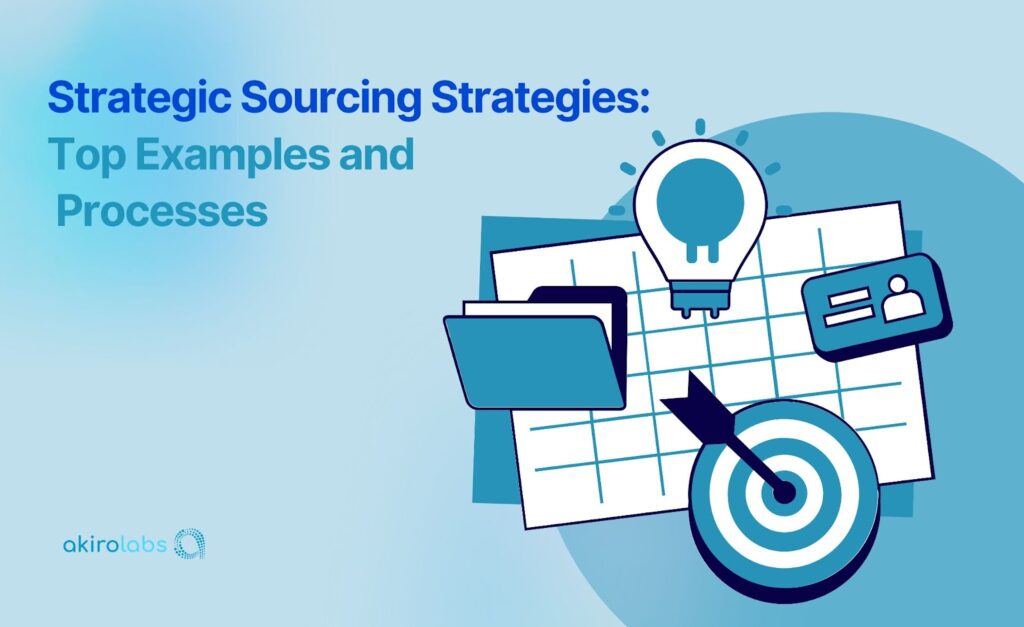Procurement is the backbone of your organization’s success. But managing it effectively can feel like an uphill battle. Without understanding a procurement categories list, you may face many problems. You might have inefficiencies, higher costs, and missed opportunities. Does this sound familiar?
Well-defined procurement categories offer great value. They save time, reduce risks, and also boost your bottom line. But where should you begin?
This guide will show you how to identify a procurement categories list. You’ll learn about their types and how to create strategies that deliver results.
What are Procurement Categories?
Procurement categories are groups of goods or services that share similar traits. They help you organize and streamline your procurement process. Think of them as a clear procurement categories list. This list helps you group similar purchases.
For example, you could create a category for office supplies. You could also make another category for IT services.
Defining procurement categories provides a structured approach to procurement management, replacing the chaos of unorganized processes. This structure offers several key benefits:
- Enhanced Operational Efficiency: A well-structured procurement system streamlines operations.
- Informed Decision-Making: Clear categories provide better visibility into spending patterns.
- Improved Procurement Strategies: Organized categories allow for targeted strategies, optimizing supplier relationships and cost management.
- Smarter Purchase Management: Proper organization helps identify areas for cost savings and improve overall procurement efficiency.
Establishing procurement categories allows you to transform your purchasing processes into a more effective and efficient system.
Now that we know about procurement categories, let us see why it is necessary.
Why Use Procurement Categories?

procurement into distinct categories is not merely about maintaining order; it Organizing is a strategic initiative. This approach enhances decision-making capabilities and drives superior outcomes in procurement management.
Grouping your purchases into clear categories has many benefits. It creates structure, streamlines processes, and also unlocks new growth opportunities.
Here’s why procurement categories are essential for your business.
1. Control Costs More Effectively
Effective cost management is a cornerstone of successful procurement, and organizing purchases into categories can dramatically enhance this process. With clear visibility into your spending, you can easily spot inefficiencies, identify cost-saving opportunities, and make smarter financial decisions.
How does this work?
- Bulk Purchasing for Better Deals: Grouping similar purchases across departments allows you to negotiate volume discounts and secure more favorable supplier terms.
- Streamlined Spending: You can reallocate resources to areas that drive innovation or growth by eliminating overlaps and unnecessary expenditures.
- Budget Optimization: A structured approach ensures that every dollar spent delivers maximum value without compromising quality or efficiency.
Imagine reducing waste and channeling those savings into strategic initiatives like technology upgrades or sustainability programs. Category management makes this vision a reality by enabling cost-effective procurement decisions.
2. Manage Suppliers with Ease
Strong supplier relationships are at the heart of efficient procurement operations. Managing suppliers becomes a much more streamlined process when procurement categories are clearly defined. Categorization helps you identify key suppliers, assess their contributions, and foster mutually beneficial partnerships.
Why does this matter?
- Focused Supplier Management: Clear categories allow you to assign suppliers to specific segments, making it easier to manage contracts, assess performance, and address issues.
- Enhanced Collaboration: Building strong relationships with suppliers opens the door to tailored solutions, faster issue resolution, and even co-innovation opportunities.
- Improved Outcomes: Suppliers who feel valued and aligned with your strategic goals are more likely to deliver superior service and meet your expectations consistently.
By prioritizing communication and collaboration with your suppliers, you ensure reliable deliveries, maintain quality standards, and create a resilient supply chain. This not only strengthens your procurement process but also boosts overall business performance.
3. Make Data-Driven Decisions
In today’s data-driven world, information is a powerful tool, but only if it’s organized and actionable. Procurement categories provide a framework for gathering and analyzing data, giving you the insights to make informed, strategic decisions.
How does data-driven decision-making benefit you?
- Identifying Opportunities: Analysis of spending patterns can reveal areas where consolidation of suppliers or renegotiation of contracts could result in significant savings.
- Proactive Planning: Data allows you to anticipate potential challenges, such as rising costs or changing supplier conditions, and respond before they become problems.
- Enhanced Efficiency: With clear insights, you can optimize procurement processes to align with organizational objectives, such as cost control or innovation.
When you use data effectively, procurement decisions become less reactive and more strategic, ensuring that every action contributes to long-term success.
4. Reduce Risks
Procurement is inherently risky; supplier failures, price volatility, and market disruptions can all impact your operations. A well-structured approach to procurement helps you identify and mitigate these risks before they escalate.
How does category management help reduce risks?
- Visibility into Vulnerabilities: Categorizing spending provides a clear view of potential risks, such as over-reliance on a single supplier or exposure to volatile markets.
- Strategic Risk Mitigation: Diversifying your supplier base and negotiating flexible contracts ensure that disruptions, whether from supply shortages or price fluctuations, won’t derail your operations.
- Resilience and Continuity: By planning for potential disruptions, you create a procurement process that is agile and capable of weathering unexpected challenges.
Risk management is not just about avoiding problems; it’s about building a procurement strategy that ensures stability and resilience, even in uncertain times.
5. Align Procurement with Business Goals
Procurement is no longer just about buying goods and services; it’s a strategic function that drives organizational objectives. When procurement categories align with business goals, the impact extends beyond cost savings.
What can this alignment achieve?
- Sustainability Goals: You can focus on sourcing eco-friendly materials and working with ethical suppliers to support your organization’s sustainability initiatives.
- Innovation and Growth: By partnering with suppliers and prioritizing innovation, you can bring cutting-edge solutions into your operations, driving competitive advantage.
- Strategic Value Creation: Procurement categories allow you to align your spending decisions with broader objectives, such as market expansion or operational excellence.
For example, a business prioritizing sustainability can use category management to source from green-certified suppliers, reducing environmental impact while meeting consumer and investor expectations. Similarly, a focus on innovation might drive partnerships with suppliers offering advanced technologies.
In the next section, we are going to take a look at the different types of procurement categories.
Different Types of Procurement Categories

Procurement categories can be divided based on the purpose of the items you procure. You can also group them by the nature of the items.
These categories offer a structured approach to managing purchases. They help ensure your procurement process aligns with your business needs. They also support your overall goals.
Below are the main types of procurement categories. Each is explained in detail.
1. Direct Procurement
Direct procurement involves goods or services contributing directly to your final product. These are critical to your core operations. These items are essential for your core business operations. They directly impact the quality of what you deliver to customers.
- Examples: For a car manufacturer, this might include raw materials. Examples are steel, tires, or engines. In a service-based business, it could include tools or software. These might be essential for service delivery, such as development platforms for IT companies.
Direct procurement requires precise planning. It also depends on reliable supplier relationships. Disruptions in this category can have serious effects. They can impact your production timelines and harm customer satisfaction.
2. Indirect Procurement
Indirect procurement supports your business operations. These purchases don’t contribute directly to your final product. While they don’t generate revenue, these items are essential for running your organization efficiently.
- Examples: Office supplies, marketing services, facility maintenance, or employee training programs.
Managing indirect procurement efficiently can help you control operational costs and improve productivity. Though often overlooked, this category is vital in ensuring smooth business operations.
3. Services Procurement
Services procurement focuses on acquiring external expertise. It also involves obtaining support to meet specific business needs. These services can be project-based. They can also be ongoing. They are often essential for activities outside your core competencies.
- Examples: Hiring IT consultants to upgrade your cybersecurity systems. They can help upgrade your cybersecurity systems. Another example is engaging a legal firm. This is useful for handling compliance matters. You can also use temporary staffing agencies. They can help address short-term workforce shortages.
Effective management of this category ensures you get the right services. It helps you access them at the right time. This approach optimizes both cost and quality. At the same time, it helps maintain flexibility.
4. Services Procurement
Capital expenditures include investments in long-term assets that support your business’s growth and operations. These are typically high-value, one-time purchases that require careful planning and budgeting.
- Examples: Buying machinery for a factory, purchasing real estate for office expansion, or implementing advanced procurement software solutions.
CapEx decisions have a lasting impact on your organization’s financial performance. They also affect operational performance. Because of this, CapEx decisions must align with long-term business strategies.
5. MRO (Maintenance, Repair, and Operations)
MRO procurement focuses on items and services needed to maintain and repair your company’s facilities, equipment, and operations. These items ensure the smooth functioning of your business and help avoid disruptions.
- Examples: Spare parts for machinery, cleaning supplies for offices, or tools for facility maintenance teams.
While MRO purchases may seem minor, their consistent availability is crucial to avoid costly downtime and maintain operational efficiency.
6. Sustainable Procurement
Sustainable procurement is a growing category. It focuses on goods and services that meet ESG standards. ESG stands for environmental, social, and governance standards.
Businesses using this approach aim to reduce their environmental impact. They also strive to support ethical practices.
- Examples: Sourcing biodegradable packaging materials, partnering with suppliers that use renewable energy, or working with fair-trade certified vendors.
This category is becoming increasingly important. Organizations are striving to meet sustainability goals. They also aim to enhance their brand image. Additionally, they work to align with consumer expectations for socially responsible practices.
A structured procurement categories list helps you analyze spending. It also helps you improve supplier relationships. Additionally, it allows you to mitigate risks.
The right tools can simplify this process. AI-driven platforms like akirolabs are a great example. They help make your procurement strategy effective and future-proof.
Let us walk you through the steps to identify procurement categories and their types.
Steps to Identify Procurement Categories and Types

Identifying procurement categories is key to making your purchasing process more efficient and aligned with your business goals. Follow these steps to categorize procurement activities effectively. This ensures your efforts drive value for your organization.
1. Understand Your Spend Categories
Effective procurement category management begins with a clear understanding of your spend categories. This process shifts the focus of procurement teams from generic tasks to driving value in specific business areas. However, you need a comprehensive list before you can influence these categories.
Failing to account for even a single category risks leaving significant spending areas unmanaged and unsupervised. To thoroughly inventory your categories, consolidate and organize all spend data into a procurement spend taxonomy. A taxonomy is a hierarchical breakdown of expenditures, categorized by what the business purchases rather than who makes the purchase.
This distinction is crucial, as it provides clarity and focus. While sorting spend data into a taxonomy can seem daunting, advancements in AI and spend analytics tools have made the process significantly more efficient. Implementing these technologies ensures accurate categorization and establishes a foundation for impactful category management.
2. Identify the Most Impactful Categories
Managing all categories is feasible for larger procurement organizations with dedicated category teams. However, smaller teams may need to prioritize a few high-impact categories to drive meaningful results. This step involves evaluating which areas of the business warrant the most attention.
Consider the following questions:
- Which categories are critical to business operations?
- Where is the majority of our spending concentrated?
- Are there any visible, large-scale challenges?
- What are the expectations of Finance or the board for this year?
By focusing on categories with the greatest potential for impact, you shift your efforts from administrative tasks to strategic value creation. Going deeper into a few categories rather than spreading your resources thin allows for a more profound and measurable impact on your organization.
3. Segment Spend into Categories
Group similar goods and services into distinct categories. Organize them based on their function or purpose. For example, office supplies can be one category. IT services can form another. Marketing materials can be a third category. This step helps you understand your spending patterns. It also highlights areas where you can improve efficiency.
4. Analyze Category Spend
Take a close look at the spending within each category. Identify trends, areas with high costs, and potential savings opportunities. This analysis reveals where your procurement team should focus its efforts to maximize value. For instance, you may find opportunities to negotiate better deals with suppliers or consolidate purchases across departments.
5. Engage Stakeholders
Work with key stakeholders across your organization to validate your categories. This collaboration ensures the categories reflect the actual needs of the business. For example, IT, operations, and marketing team leads can provide valuable insights. They can share details about their specific procurement requirements. This input makes your categories more accurate. It also makes them more effective.
6. Develop Category Strategies
Based on your analysis, create a specific strategy for each category. These strategies should align with your business goals. They should address key areas such as cost optimization, supplier relationships, and risk management. For example, you might reduce supplier dependencies in one category. In another category, you could prioritize cost savings.
7. Implement and Monitor
Put your category strategies into action and track their performance over time. Use key performance indicators (KPIs) to measure success and identify areas for improvement. Regular monitoring ensures your strategies stay relevant and deliver results as your business evolves.
These steps help you create a clear procurement categories list. This list will effectively support your organization’s needs.
A well-structured approach brings many benefits. It helps you save time and cut costs. It also creates value for your business.
Using tools like procurement software makes the process even more efficient. These tools provide insights to help optimize your procurement strategy. Let’s see how we can analyze procurement categories.
Analyzing Procurement Categories
Once you’ve defined your procurement categories, analyzing them is the next critical step. This analysis ensures that each category adds value to your organization and aligns with your business goals.
Here’s how you can effectively evaluate your procurement categories:
1. Spend Analysis
Understanding your spending habits is the foundation of smart procurement. Dive deep into each category and analyze where your money is going. Look for patterns, trends, and any red flags that stand out. For example, you might discover that a specific category is consistently over budget or notice items being purchased more frequently than necessary.
This analysis isn’t just about spotting inefficiencies—it’s about uncovering opportunities to make your spending work harder for you. Ask yourself:
- Are there items we could purchase in bulk to get better pricing?
- Are there unnecessary purchases we can eliminate?
By identifying these areas, you can make informed decisions, cut costs, and allocate your budget more effectively. It’s about working smarter, not harder, with your resources.
2. Supplier Evaluation
Your suppliers are the backbone of your procurement process, so it’s crucial to evaluate them regularly. This means looking at factors like pricing, quality of goods or services, delivery timelines, and responsiveness. A supplier consistently delivering late or providing subpar quality can disrupt your operations and impact your bottom line. On the other hand, high-performing suppliers who meet or exceed expectations could be given more business.
Consider these key questions:
- Are our suppliers meeting the quality and timeline standards we need?
- Can we consolidate suppliers to reduce costs and improve efficiency?
Evaluating your supplier base helps you strengthen your supply chain, build better relationships, and ensure you get the best value for your money. Think of it as a partnership; when your suppliers succeed, so does your organization.
3. Market Intelligence
In today’s fast-changing world, staying ahead of market trends is not optional; it’s essential. Keeping an eye on market dynamics allows you to anticipate potential risks and adjust your procurement strategy accordingly. Tools and resources can help you track key data, such as pricing fluctuations, supply chain disruptions, and emerging industry trends.
For example, if raw material prices rise, you might need to renegotiate contracts or explore alternative suppliers to maintain profitability. Ask yourself:
- Are there new suppliers or innovations in the market that could benefit us?
- Do external factors, like economic shifts or regulatory changes, impact our procurement categories?
By staying informed, you can proactively adapt your strategies, keeping your procurement process efficient and competitive. Market intelligence is like having a GPS for your procurement journey, and it ensures you’re always heading in the right direction.
Each step, spend analysis, supplier evaluation, and market intelligence, provides insights to optimize your procurement categories. Together, they help you:
- Identify cost-saving opportunities.
- Strengthen supplier relationships.
- Stay ahead of market changes and risks.
The key is to continuously evaluate and refine your approach. Procurement isn’t a set-it-and-forget-it process; it’s dynamic and ever-evolving. By keeping your strategies agile, you create a procurement process that’s not just cost-effective but also value-driven.
Developing Category Management Strategies
Developing robust category management strategies is a cornerstone of effective procurement. These strategies optimize the procurement process and ensure alignment with your organization’s broader goals. A well-structured approach brings immense value by maximizing procurement outcomes, minimizing risks, and improving efficiency.
Follow these steps to create impactful category management strategies:
1. Engage Key Stakeholders
Involving the right stakeholders early in the process ensures that your strategies are relevant and aligned with organizational goals. Key contributors, such as department heads, procurement teams, and finance leaders, can offer valuable insights and address specific needs within their areas of expertise.
Stakeholder engagement also fosters collaboration, builds consensus, and reduces conflicts during implementation.
How do we engage stakeholders effectively?
- Organize collaborative meetings to discuss goals, priorities, and potential challenges.
- Encourage open dialogue to gather diverse perspectives.
- Demonstrate how the strategies will benefit each department and the organization.
By involving stakeholders in the planning process, you gain their support and create more practical and impactful strategies.
2. Conduct Comprehensive Market Research
Market research is essential for understanding the external factors influencing each procurement category. It provides critical insights into supplier capabilities, pricing trends, industry standards, and emerging technologies.
Why is this important?
Thorough market research helps you:
- Identify opportunities for cost savings and quality improvements.
- Anticipate and mitigate risks.
- Stay competitive by adapting to industry changes and technological advancements.
Best practices for effective market research
- Use reliable sources such as industry reports, supplier data, and analytics tools.
- Focus on trends that directly impact your organization’s procurement categories.
Armed with these insights, you can create relevant and forward-thinking strategies.
3. Develop Tailored Category Strategies
Once you’ve gathered the necessary data, use it to create customized strategies for each procurement category. These strategies should be specific, goal-oriented, and designed to address each category’s unique challenges and opportunities.
Examples of tailored strategies include
- Negotiating supplier contracts to achieve cost savings.
- Setting clear performance expectations to ensure quality.
- Exploring partnerships to incorporate innovative technologies.
Tailored strategies are more likely to deliver measurable value and align seamlessly with your business objectives. They also help target specific outcomes, such as reducing costs, improving supplier performance, minimizing risks, and fostering innovation.
4. Implement and Monitor
After finalizing your strategies, the next step is to implement them. Implementation requires a structured approach with clear plans, timelines, and accountability.
Key steps for successful implementation
- Create detailed action plans that outline responsibilities and deadlines.
- Set measurable goals and define key performance indicators (KPIs) to track progress.
Monitoring is equally important to ensure the strategies remain effective. Regularly review performance metrics such as cost savings, supplier performance, and risk mitigation.
How to stay on track
- Use data-driven insights to analyze issues if a strategy isn’t meeting expectations.
- Engage stakeholders in problem-solving discussions and make necessary adjustments.
- Continuously update strategies to reflect changing business needs and market conditions.
5. Continuous Improvement
Category management isn’t a one-time task. It’s an ongoing process that requires regular evaluation and refinement. By keeping your strategies dynamic and adaptable, you can ensure long-term success and alignment with your organization’s goals.
How Can akirolabs Help You Optimize Your Procurement Process?
If managing your procurement process feels overwhelming, akirolabs can change that. This AI-powered platform is built to simplify your procurement efforts, make collaboration seamless, and give you the insights you need to make smarter, faster decisions. Here’s how akirolabs can help you take control and transform your procurement strategy:
1. Collaborate in One Central Hub
With akirolabs, you can centralize all plan-to-strategy processes for your strategic procurement and category management needs. Say goodbye to scattered spreadsheets and endless email threads.
- Stay Aligned: Collaboration means involving all relevant stakeholders—whether internal or external—right from the start. By inviting them to be part of the strategy-building process, you ensure early buy-in and make it easier to gather business requirements. Everyone has access to the strategies being developed, fostering seamless teamwork and alignment from day one.
- Tranparency and Complient: The platform makes it easy to trace decisions, ensuring transparency and compliance. With built-in audit-friendly features, you can reliably track who made what decision, making the entire process clear, accountable, and easy to review.
2. Access to Spend Data
No more moving between fragmented tools or endless spreadsheets. akirolabs integrates seamlessly with your preferred spend analytics tool, allowing you to access and leverage spend data in one centralized place.
- Flexible Data Integration: Ingest data through uploads or direct integrations with a frame-in-frame view that mirrors your existing spend analytics tool.
- Centralized Insights: Consolidate all your spend data, making it easier to create effective category strategies without switching between multiple platforms.
3. Build Supplier Strategies
If you want to improve the way you work with suppliers, akirolabs makes it easy. You can create clear supplier strategies, track progress, and make smarter decisions that add value to your business.
- Create Supplier Strategies: Develop plans to work with the right suppliers who meet your goals.
- Strengthen Your Business: Build strong supplier partnerships by inviting them to be an extended part of your strategy.
4. Proactively Reduce Risks
Procurement teams often find themselves reacting to disruptions, but akirolabs helps you stay ahead of the curve. With scenario modeling capabilities, you can plan for potential risks and future-proof your operations.
- Plan Ahead: Build and analyze multiple scenarios to prepare for global issues like supplier disruptions, price volatility, or market changes, ensuring your business is ready for any challenges.
- Stay Prepared: Move beyond firefighting by creating contingency strategies that keep operations running smoothly, even in unpredictable situations.
5. Track and Achieve Goals
If you want to focus on creating measurable value for your business, akirolabs is here to help. You can track progress of your initiatives, measure results, and make sure your procurement strategy supports your business and sustainability goals.
- Keep Track of Your Initiatives: Use easy tools to see what’s working and where you’re making the most impact.
- Measure Your Progress: Use simple reports to show how well you’re reaching your goals.
- Build a Stronger Brand: Show department heads and board that you care about business and bottom line.
6. Create Strategies That Fit Your Business
You know every procurement category is unique, and akirolabs gives you the tools to develop tailored strategies for each one. It’s all about focusing on your goals and what works best for you.
- Adapt Your Plans: Build strategies that evolve as your business needs and market conditions change.
- Set KPIs That Matter: Track the metrics that align with your goals and adjust as needed.
- Unlock the value dimensions that are most important for your business: Use data insights to find the right levers to maximize business value.
Conclusion
Identifying and managing procurement categories is a strategic move that can transform your procurement process. By grouping purchases into clear categories and analyzing them effectively, you can control costs, reduce risks, and align procurement with your business goals.
If you’re ready to enhance your strategy, platforms like akirolabs can help. These tools streamline category management, offer AI-driven insights, and promote collaboration in one centralized platform.
Don’t wait to optimize your procurement process. Request a demo today and discover how akirolabs can drive efficiency and value for your organization.
